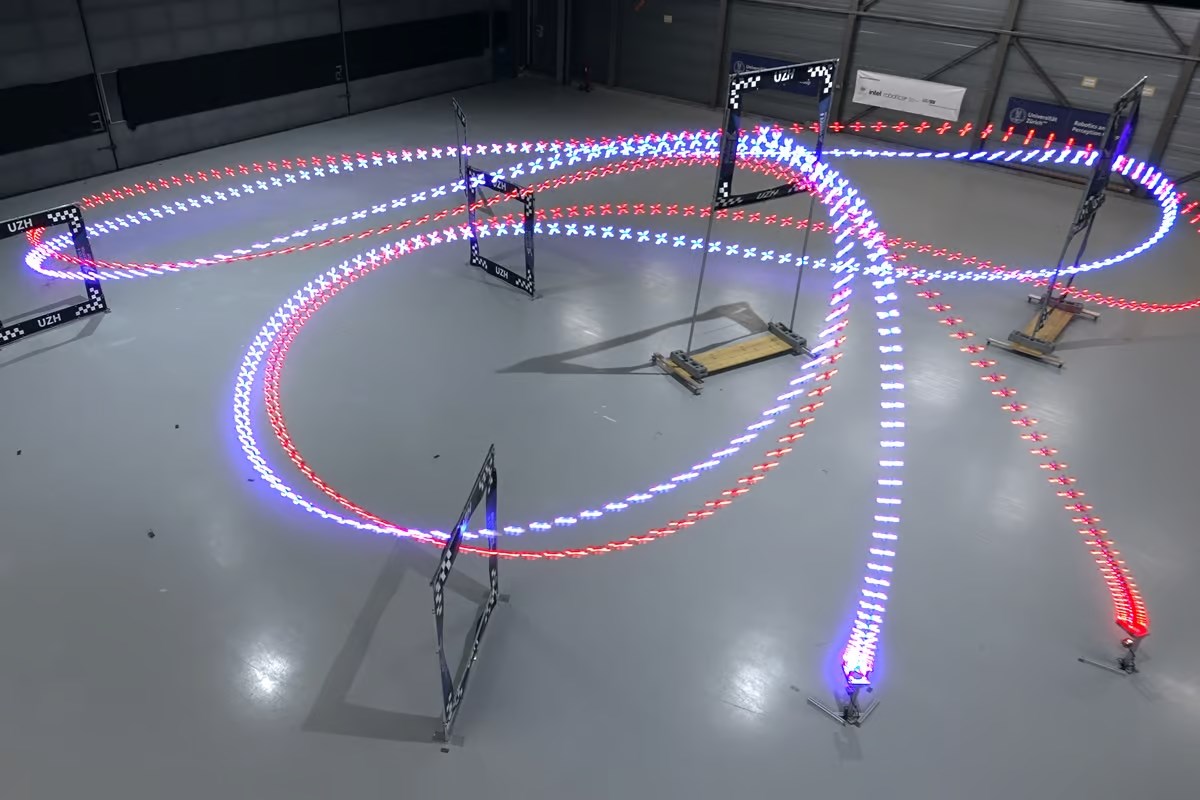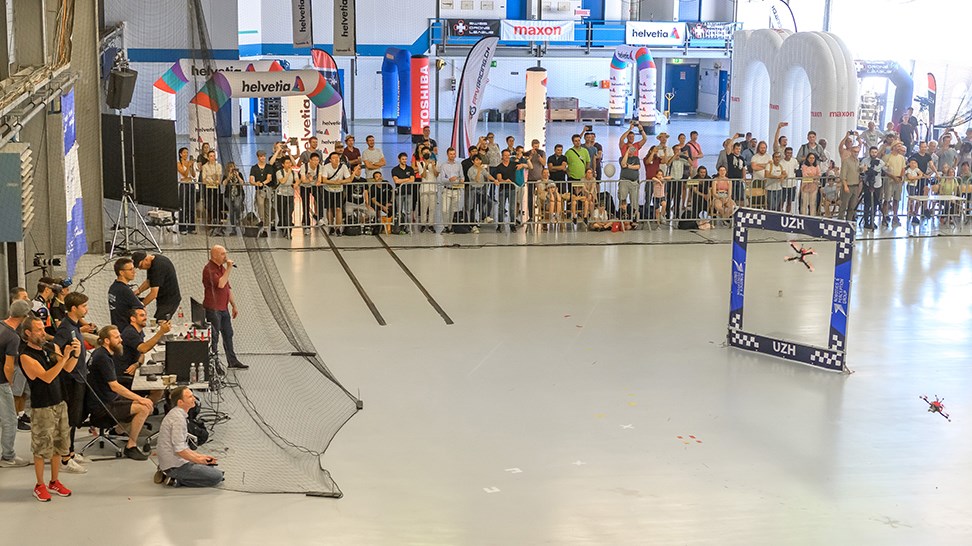 An autonomous AI designed by University of Zurich researchers has repeatedly beat three world champion-level pilots with uncanny precision in dynamic flight. While there is a new “Deep Blue” moment in artificial intelligence, no artificial intelligence system has ever been able to beat humans in real-world conditions and in a physical sport.
An autonomous AI designed by University of Zurich researchers has repeatedly beat three world champion-level pilots with uncanny precision in dynamic flight. While there is a new “Deep Blue” moment in artificial intelligence, no artificial intelligence system has ever been able to beat humans in real-world conditions and in a physical sport.Deep Blue dominated the chess world, and AlphaGo dominated the artificial intelligence game Go. Both systems trained on millions of past games and millions of potential moves and strategies, beating top players in their field. But now, for the first time, AI manages to beat some of the world’s best in a physical sport, in the real world.
Artificial intelligence beat humans in drone race
If you’ve ever watched a high-end drone race from an FPV perspective, you know how much skill, speed, precision and dynamic control it takes. It’s fascinating to see how the human brain can make calculations so quickly and respond in real time to changing situations, as when watching Formula 1 from the driver’s perspective.
An artificial intelligence system called Swift, developed by researchers from the University of Zurich and Intel, was able to beat two human world champions and a three-time Swiss national champion in a head-to-head race by quickly learning a tight and technical 3D racetrack. Swift also achieved the fastest race time.
 The Swift system used the same single-camera sight set-up as human pilots to see its path on runways and crossings, but also had the advantage of using real-time acceleration, velocity and heading data from the onboard measurement unit. Swift learned the track by running 100 drones simultaneously on the track in a virtual environment. Sim-drones first explored the racetrack environment, then found the fastest paths around the track, optimizing the entire race line. This whole process took less than an hour.
The Swift system used the same single-camera sight set-up as human pilots to see its path on runways and crossings, but also had the advantage of using real-time acceleration, velocity and heading data from the onboard measurement unit. Swift learned the track by running 100 drones simultaneously on the track in a virtual environment. Sim-drones first explored the racetrack environment, then found the fastest paths around the track, optimizing the entire race line. This whole process took less than an hour.Ultimately, Swift showed off her skills on a 25 x 25 meter track built in a hangar. Thomas Bitmatta, two-time MultiGP international World Cup champion, described the Swift AI’s ability to perform sharp maneuvers with inhuman precision as “crazy”. However, Swift’s fastest lap was exactly half a second faster than a human’s best lap. Half a second is a huge value in small field races like this.
On the other hand, it was also revealed that people adapt better to changing conditions. Swift failed the race when the hangar got more sunlight than the simulation environment. Thus, the human brain excels in adaptability, at least for the time being. You can watch the races in the video below.